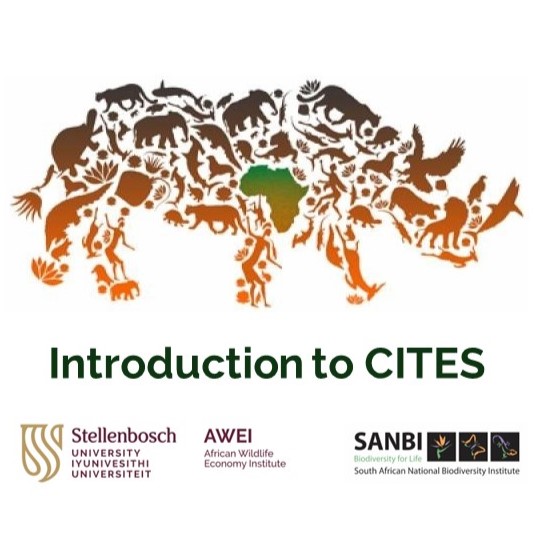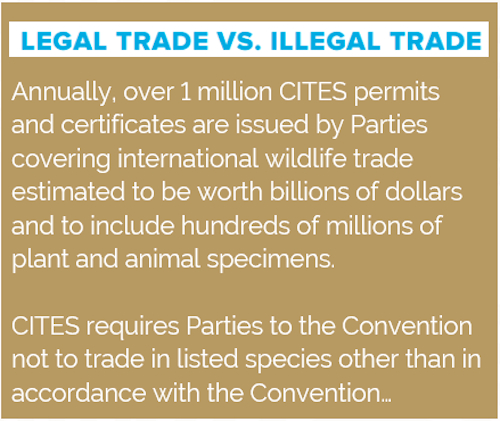CITES Module 7
 7 Discussion on CITES
7 Discussion on CITES
In this module you will review and discuss CITES and its system of listing species and applying measures to ensure that trade is sustainable and legal.
Lecture
- Click on the image below to stream the lecture on OneDrive (4 min)
- You can also download the lecture for listening offline
- Take notes while listening
Key learning outcomes from modules 5 & 6
- A general understanding of CITES and South Africa’s engagement in the convention
- To understand how species are listed on CITES appendices and the trade measures associated with these listings to ensure “the protection of certain species of wild fauna and flora against over-exploitation through international trade”
You may want to return to the two modules on CITES to further study the learning resources and reflect on the questions provided.
 Key question for discussion
Key question for discussion
- Find opportunities to discuss what you have been studying with your peers and professional colleagues. Set aside some time for meeting up face-to-face or online.
- Q: Do CITES trade measures facilitate sustainable legal trade of wild species or do they make the trade in wild species illegal?
More questions for discussion
- Q: What are the primary objectives of CITES, and how do the measures outlined within its various appendices contribute to the global effort to regulate and manage international trade in endangered species for conservation purposes?
- Q: What are the key differences between the CITES appendices, and how do the listings in each appendix impact the international trade of endangered species, aiming to ensure their conservation and sustainable use?
- Q: What fundamental principles underpin the regulations outlined in Article II of CITES, and how do they guide the listing of species in the CITES appendices, aiming to balance the conservation of endangered species with the facilitation of international trade?
- Q: What are the key trade measures implemented by CITES to regulate the international trade of species listed in its appendices, and how do these measures contribute to ensuring the sustainability of trade while safeguarding the conservation status of endangered species?
- Q: What are the procedures and requirements for obtaining export permits for species listed in CITES Appendices II and III, and how do these measures contribute to managing and monitoring international trade to ensure the sustainability of species populations and their habitats?
Let's continueGo to Module 8 on Key elemement of an NDF studyGo back to Module 6Go back to the introduction |
Get updates by email
Through impactful research, stakeholder engagement, and professional development, AWEI is supporting the wildlife economy across Africa. Please subscribe for occasional updates on our work and forthcoming events.
Sign up for a quarterly dose of AWEI insights
In a complex and changing world, AWEI generates strategic ideas, conducts independent analysis on wildlife economies, and collaborates with global scholar-practitioners to provide training and expertise for biodiversity conservation, climate resilience, and inclusive economic opportunities in Africa.
